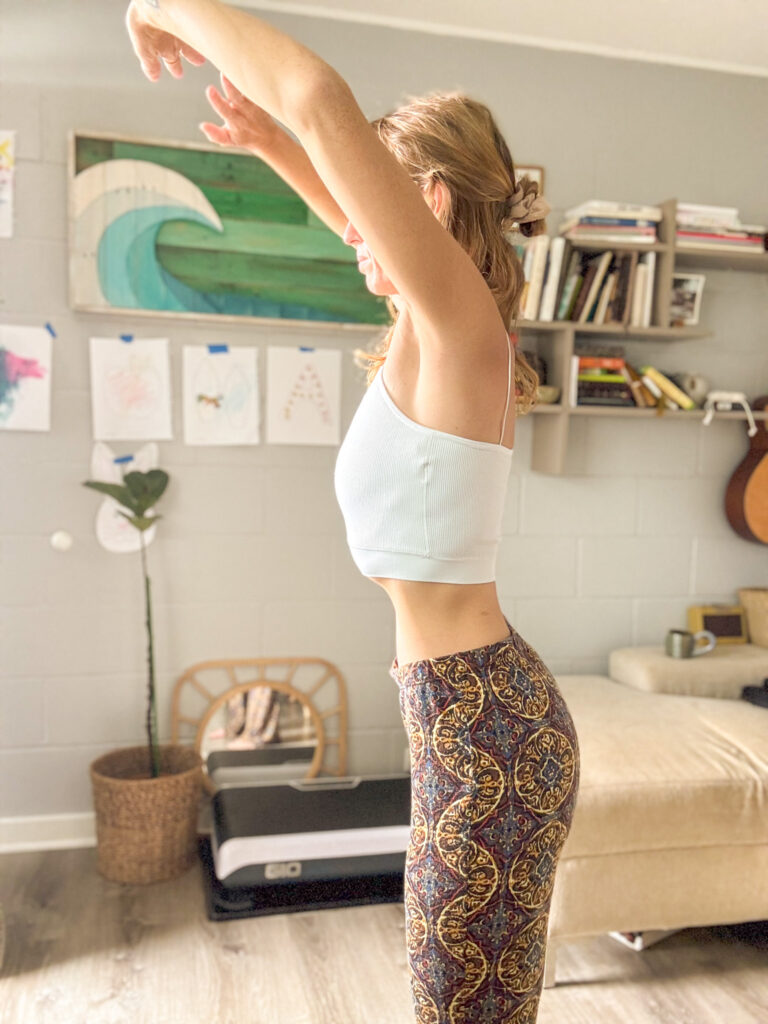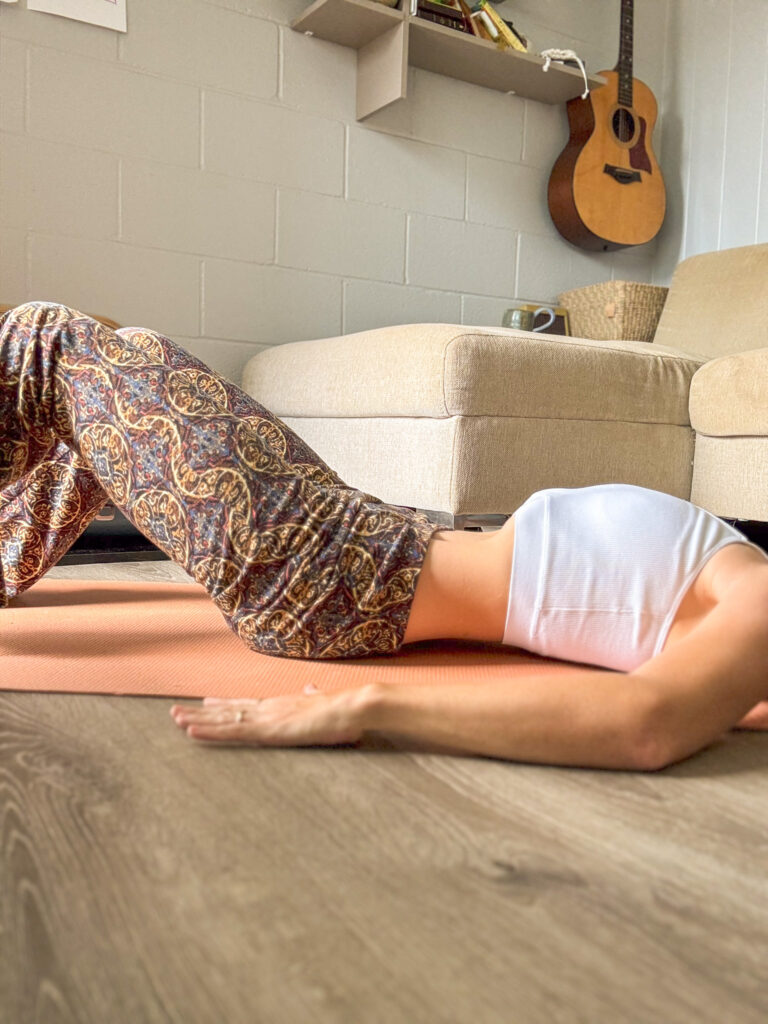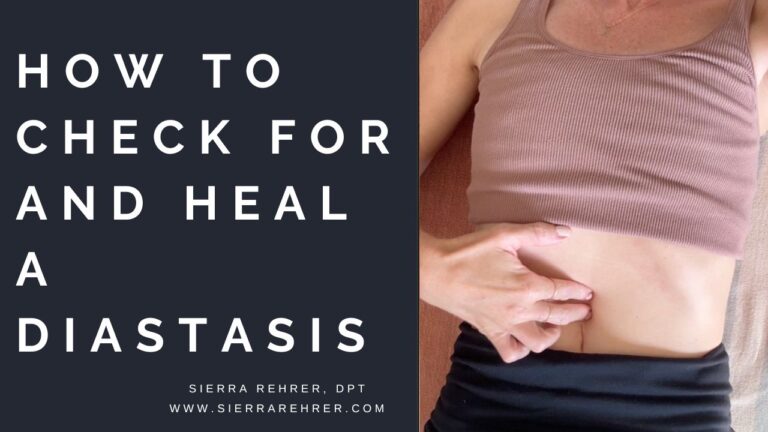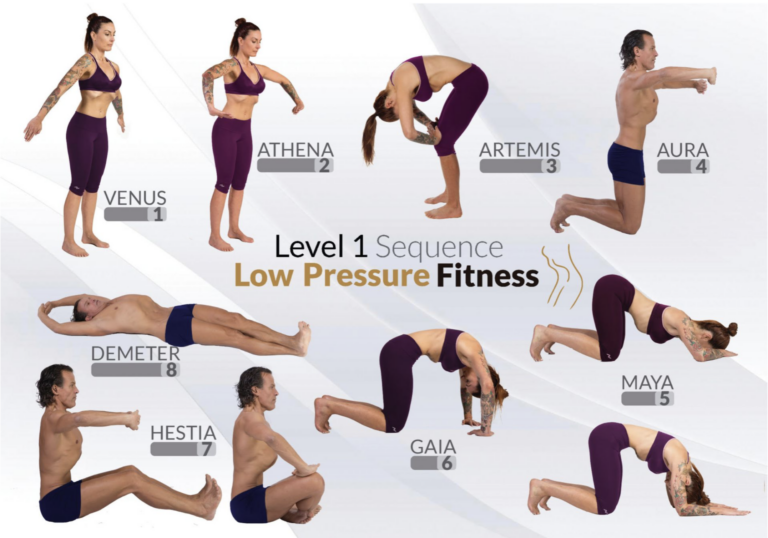low pressure fitness Level 1 post-workout flow
Try this low pressure fitness level 1 flow in the morning or after a workout!
Low pressure fitness training is designed to use posture and breath to improve alignment, decompress the spine, lift the abdominal and pelvic organs (bladder, uterus, rectum), and involuntarily strengthen the core and pelvic floor muscles. This low pressure fitness level 1 flow is a great routine to do in the morning, so that the postural improvements can remain throughout the day.
Basic low pressure fitness techniques to keep in mind:
- Breathing is a latero-costal breath, meaning that when you inhale, you should feel the ribs expand in every direction (360 deg breath), and when you exhale, the ribs should return back down.
- Breathing pattern is in through the nose, out through the mouth.
- Breathing is slow: start with 4 second inhale, 4 second exhale
- Grow through the crown of the head on exhale and try to remain this lengthening in the spine throughout the exercise
- In all positions:
- Find neutral pelvis
- Arms should be rounded in a “barrel hug” position and shoulder blades are engaged
- Weight is shifted slightly forward (axis forward)
Common Terms and definitions:
- Latero-costal breathing–> costal is a term for the ribs or ribcage, so latero-costal breathing is breathing through the rib cage. On inhale and exhale, you should feel the ribs expanding and falling in a 360 deg range
- Apnea–> breath hold
- Abdominal Vacuum–> a technique that is performed after full exhalation, where the glottis is closed, the breath is held, and the ribcage is flared to create a negative pressure suctioning effect
- Athena–>this is an arm position where the fingers are facing each other and the arms are in a rounded, engaged, barrel hug position (can be in low, mid, or high positions)
- Venus–> this is the basic standing posture of low pressure fitness, where the arms are down with fingers down and palms facing posteriorly
- Neutral pelvis–> tilt the pelvis anteriorly and posteriorly, until you find what feels and looks like a neutral pelvis that keeps the spine in good alignment
- Axis forward–> keeping the pelvis neutral and the spine straight, incline the entire body slightly forward wight weight onto the front of the feet (not through the heels)
1. Low pressure fitness level 1 standing pose:

Round 1
- Pelvis neutral
- Knees slightly bent
- Arms in low Athena position
- Axis forward
- 2-3 latero-costal breaths
- Apnea and vacuum after last full exhale
- 4-6 second hold and grow through crown of head

Round 2
- Raise arms to mid Athena on exhale
- One additional latero-costal breath
- Apnea and vacuum after full exhale
- 4-6 second hold and grow through crown of head

Round 3
- Raise arms to high Athena on exhale
- One additional latero-costal breath
- Apnea and vacuum after full exhale
- 4-6 second hold and grow through crown of head
2. Low pressure fitness level 1 Artemis Pose

Round 1
- On exhale, move into this Artemis position
- Neutral pelvis
- Hands on thighs with arms in rounded “barrel hug” position
- Knees slightly bent
- Axis forward
- 2-3 latero-costal breaths
- Apnea and vacuum after last full exhale
- 4-6 second hold
- Press into thighs and grow through crown of head during apnea

Round 2
- On exhale, move into more rounded Artemis position
- Eyes gaze to belly button
- Neutral pelvis
- Hands on thighs with arms in rounded “barrel hug” position
- Knees slightly bent
- Axis forward
- 2-3 latero-costal breaths
- Apnea and vacuum after last full exhale
- 4-6 second hold
- Press into thighs and grow through crown of head during apnea
3. Low pressure Fitness Level 1 Aura

Round 1
- On exhale, lower down to tall kneeling Aura position
- Maintain length in spine
- Hands in low Athena position
- Arms in rounded “barrel hug” position
- Toes planted on ground
- Axis forward
- 2-3 latero-costal breaths
- Apnea and vacuum after last full exhale
- 4-6 second hold growing through crown of head

Round 2
- On exhale, bring arms to mid Athena position
- Maintain length in spine
- Arms in rounded “barrel hug” position
- Axis forward
- 2-3 latero-costal breaths
- Apnea and vacuum after last full exhale
- 4-6 second hold growing through crown of head
4. Low pressure fitness level 1 Gaia

Round 1
- On exhale, lower down to quadruped Gaia position
- Maintain length in spine
- Fingers facing in
- Toes planted
- Arms in rounded “barrel hug” position
- Axis forward
- 2-3 latero-costal breaths
- Apnea and vacuum after last full exhale
- 4-6 second hold growing through crown of head

Round 2
- On exhale, move into more rounded Gaia position
- Eyes gaze to belly button
- 2-3 latero-costal breaths
- Apnea and vacuum after last full exhale
- 4-6 second hold growing through crown of head
5. Low Pressure fitness level 1 Maya

- On exhale, lower down to inverted Maya position
- Arms form triable about head (mine should be more than what is shown in this photo)
- Maintain length in spine
- Toes planted
- Axis forward
- 2-3 latero-costal breaths
- Apnea and vacuum after last full exhale
- 4-6 second hold growing through crown of head
6. low pressure fitness level 1 hestia

Round 1
- On exhale, move into seated Hestia position
- Hands on thighs with arms in rounded “barrel hug” position
- Ankles flexed back and engaged
- 2-3 latero-costal breaths
- Apnea and vacuum after last full exhale
- 4-6 second hold
- Press into thighs and grow through crown of head during apnea

Round 2
- On exhale, move arms into mid Athena position
- Arms remain in rounded “barrel hug” position
- Ankles flexed back and engaged
- 2-3 latero-costal breaths
- Apnea and vacuum after last full exhale
- 4-6 second hold
- Grow through crown of head during apnea

Round3
- On exhale, move arms into high Athena position
- Arms remain in rounded “barrel hug” position
- Ankles flexed back and engaged
- Maintain axial lengthening
- 2-3 latero-costal breaths
- Apnea and vacuum after last full exhale
- 4-6 second hold
- Grow through crown of head during apnea
7. Low pressure fitness level 1 supine (demeter)

- On exhale, lower down to supine posture
- Maintain length in spine
- Hands in low Venus position
- Hands pressing into the floor
- Heels planted on ground and ankles flexed and engaged
- 2-3 latero-costal breaths
- Apnea and vacuum after last full exhale
- 4-6 second hold growing through crown of head
Contraindications for abdominal vacuum
- Pregnancy: It is not advised to do any breath holding during pregnancy since you will be decreasing the amount of oxygen in the body and also to baby!
- What you can do is do the poses with the latero-costal breathing technique and just refrain from the vacuum! All of the poses, especially in level 1, are very safe and great to do during pregnancy
- Remember that the latero-costal breathing is beneficial without the vacuum!
- Hypertension
- Hernia repair, mesh, or other abdominal surgery
- Wait for 3 months before doing the abdominal vacuum, because the vacuum is an intense stretching of the deep and superficial layers of the fascia
- Doing the breathing and postures are still great to do– the more active you are the better your recovery
Precautions for abdominal vacuum
- Acute flare up of abdominal symptoms: there is no detriment, but likely won’t be comfortable or desirable to do
- If you are not comfortable holding your breath, it would be better to work on the ability to hold your breath for 6 seconds prior to doing the abdominal vacuum technique
- Check out a list of breath holding exercises here.
- Feeling light-headed
- If you begin to feel light-headed or dizzy, please stop your exercise and sit down, get some water, and rest.
- Feeling light-headed or dizzy is likely caused by exhaling CO2 at too fast of a rate, so it can be improved by slower breathing technique and progressing to longer exhalations.
- Work up to 1:2 ration, for example a 4 second inhale and 8 second exhale
- Read this post for some breath training ideas:
Medical disclaimer
Please keep in mind that this is not intended to be a replacement of other medical advice you have received and if you are unsure about starting low pressure fitness exercise, please consult your primary healthcare provider.







